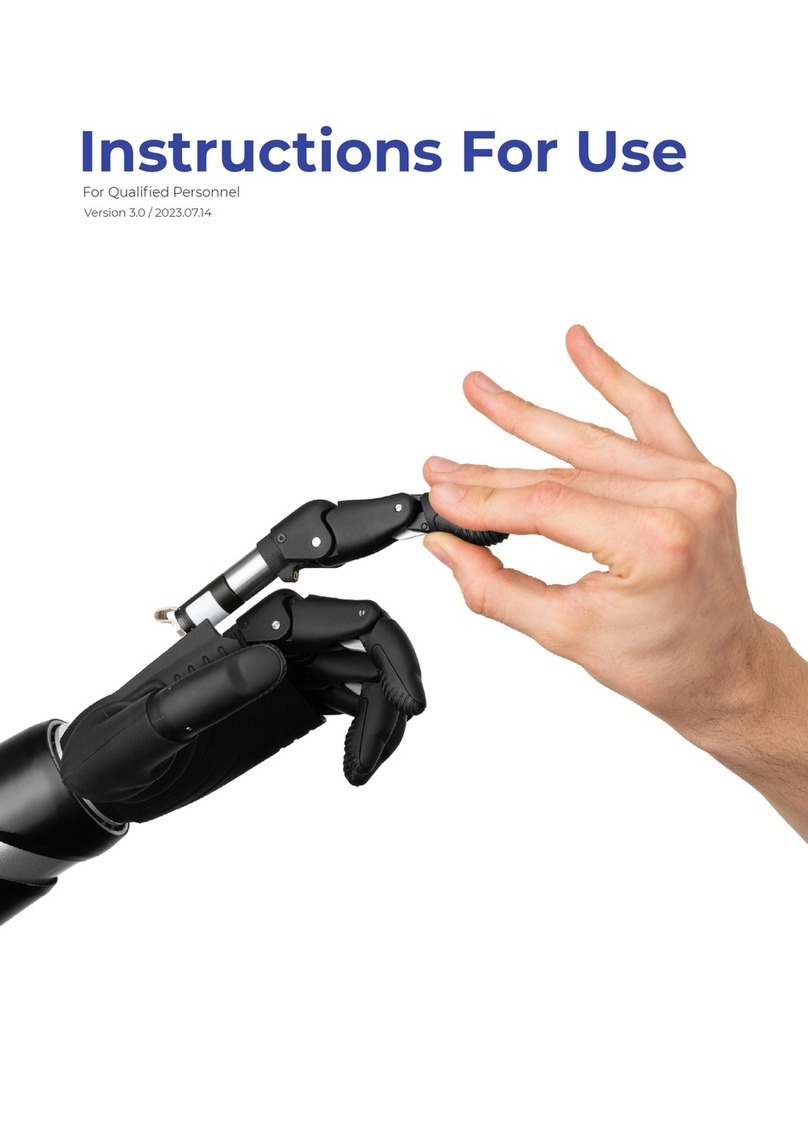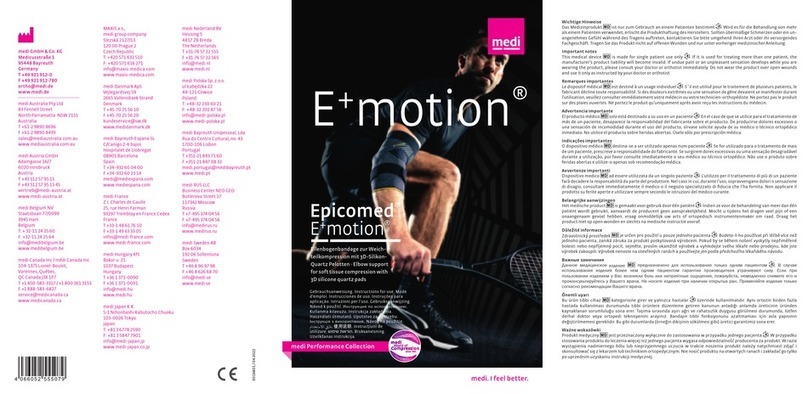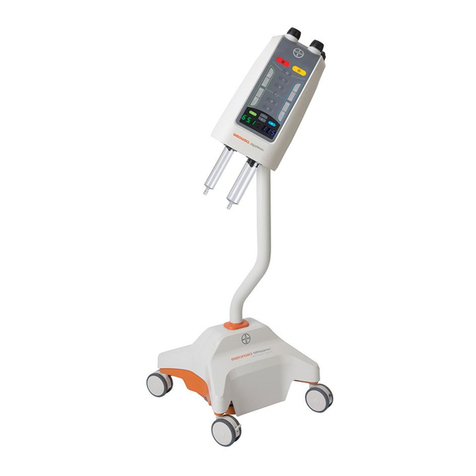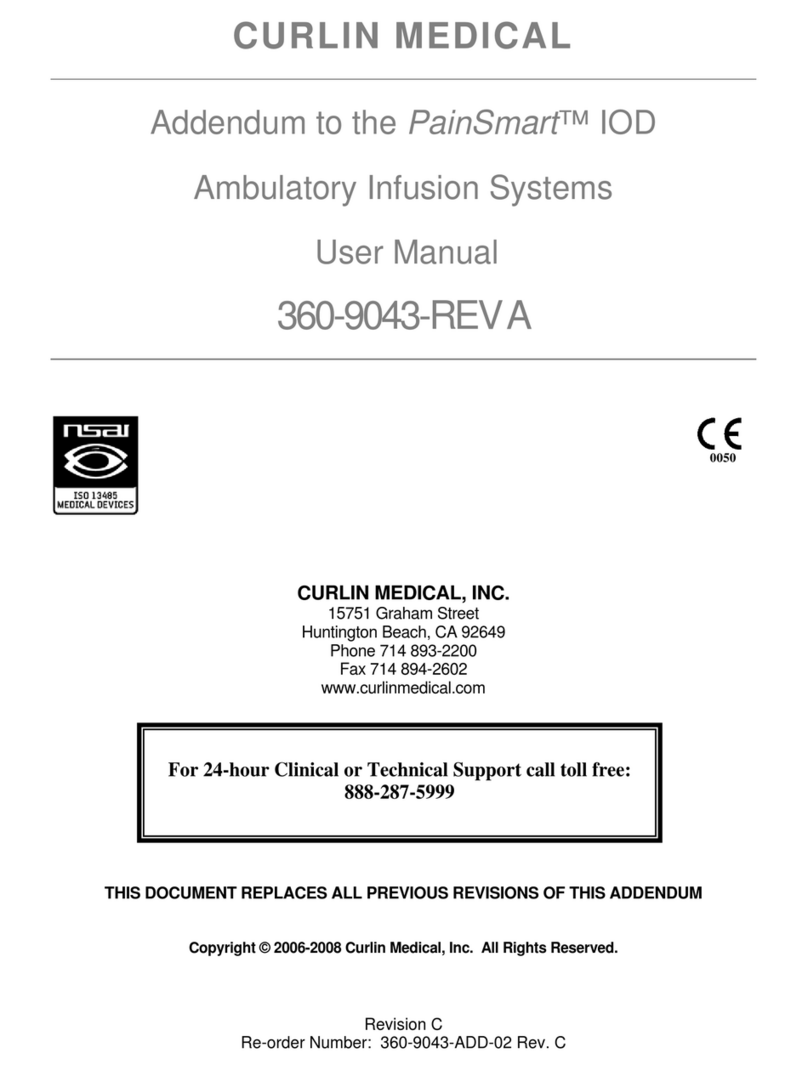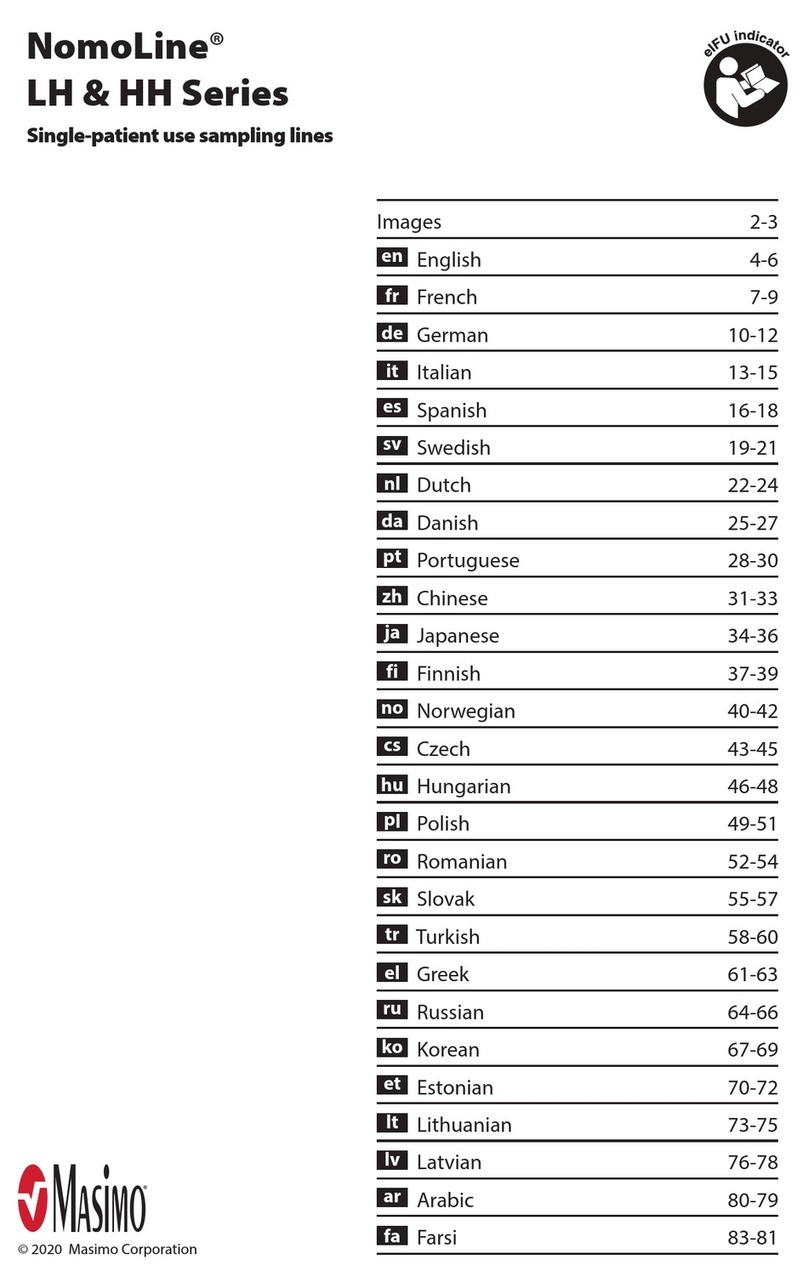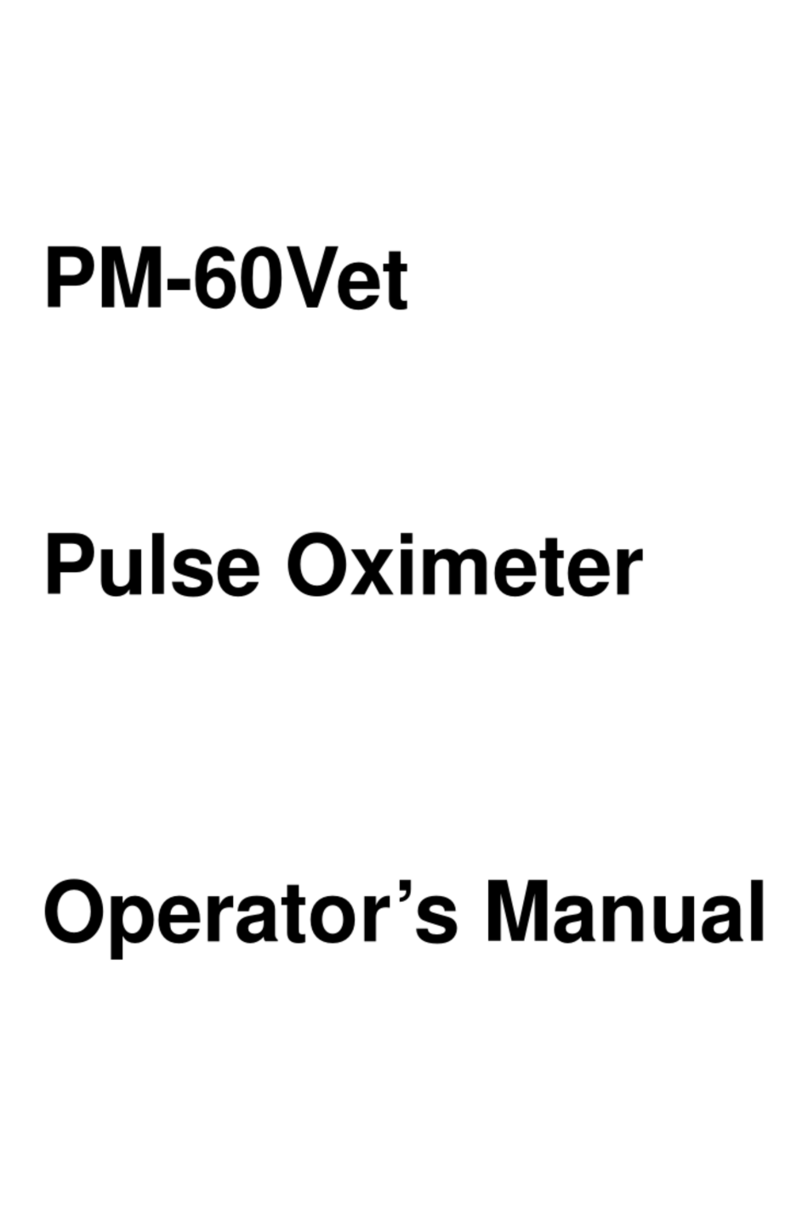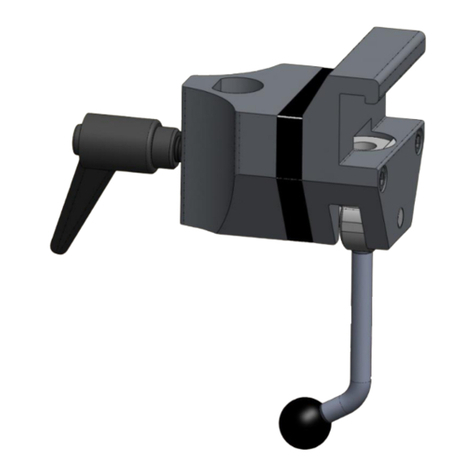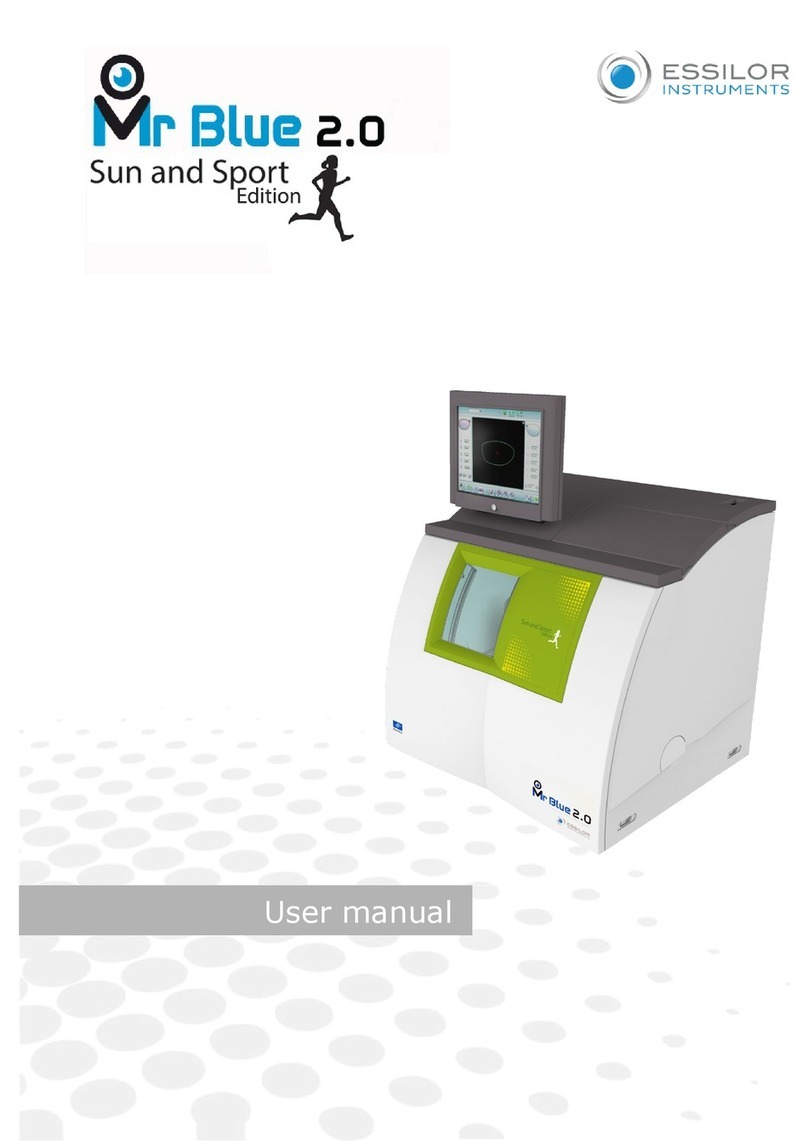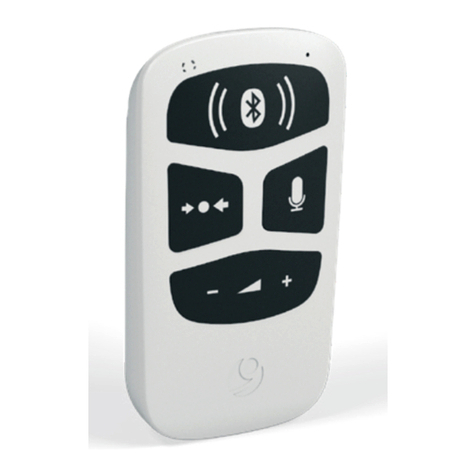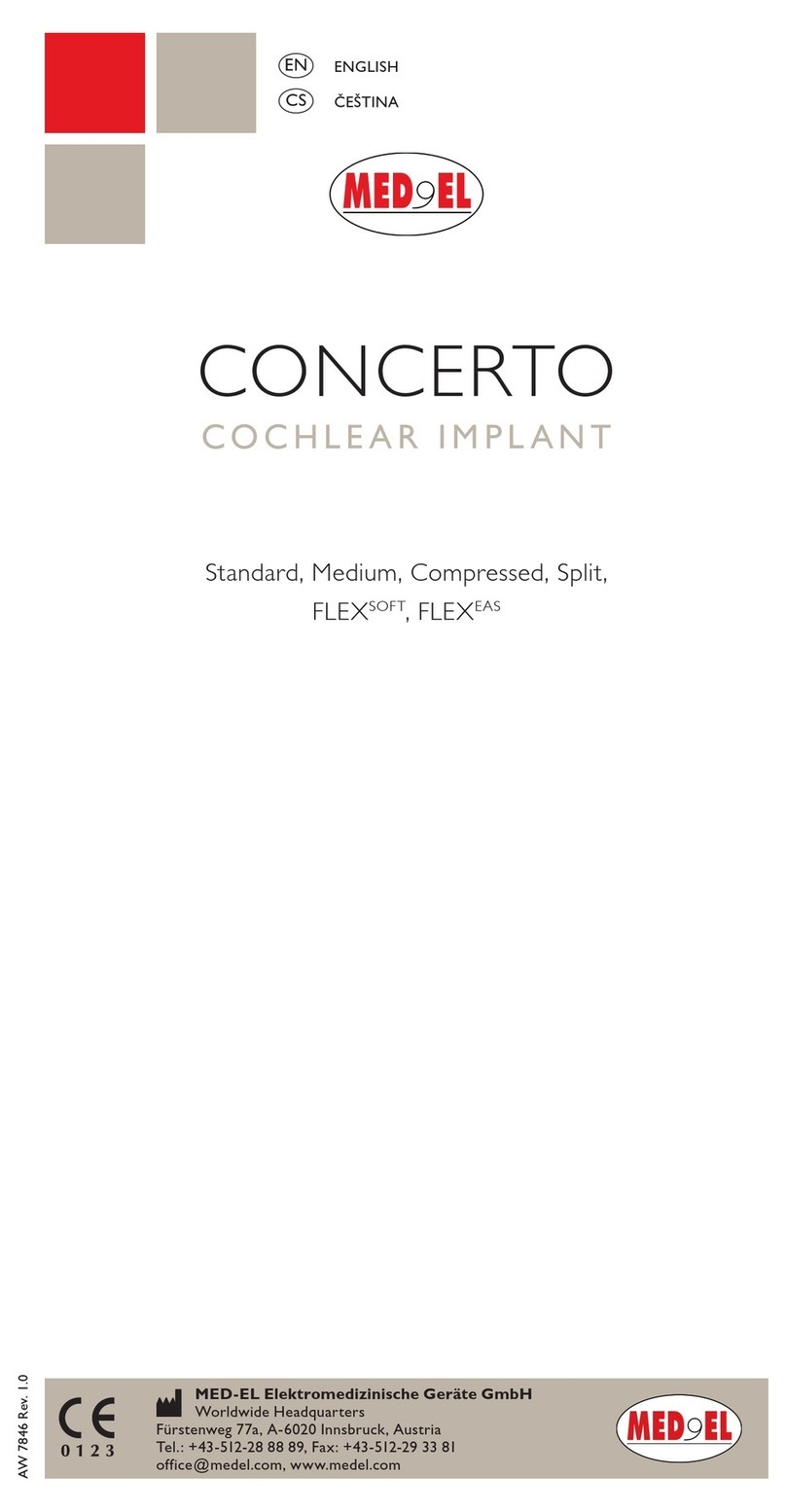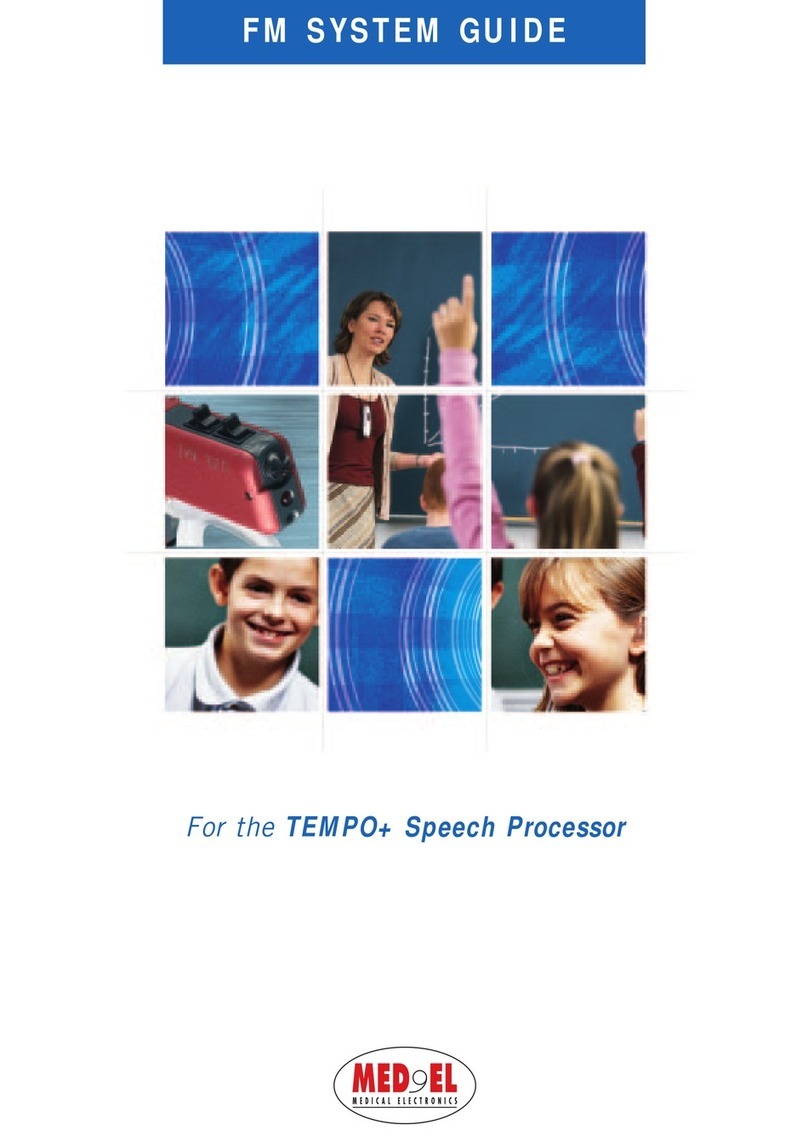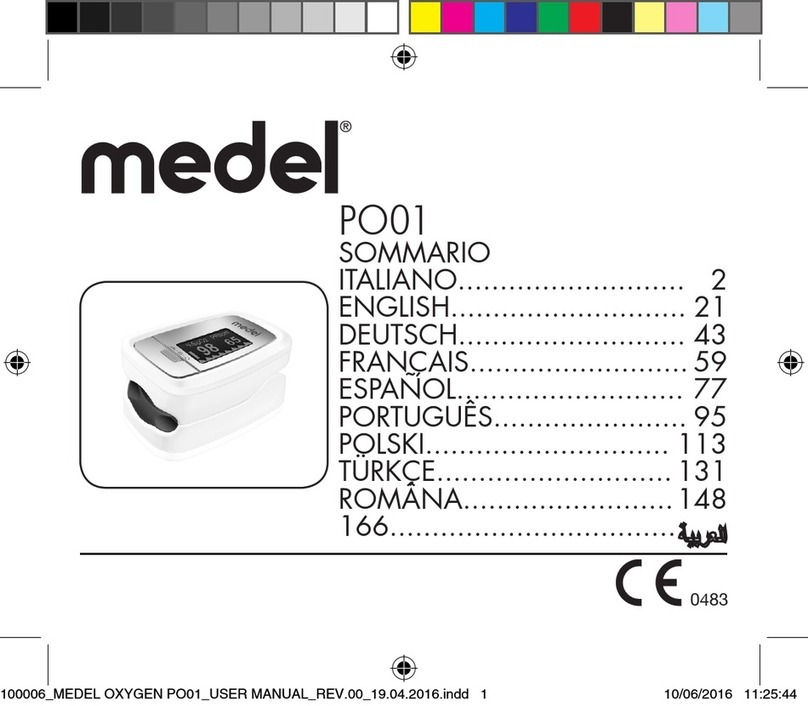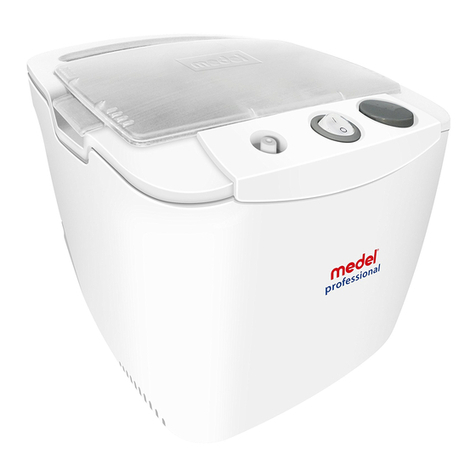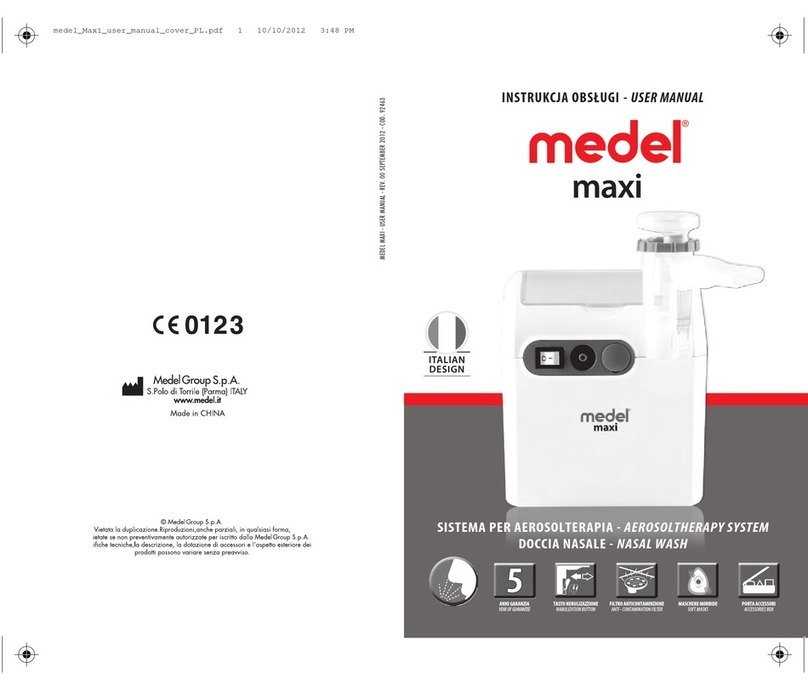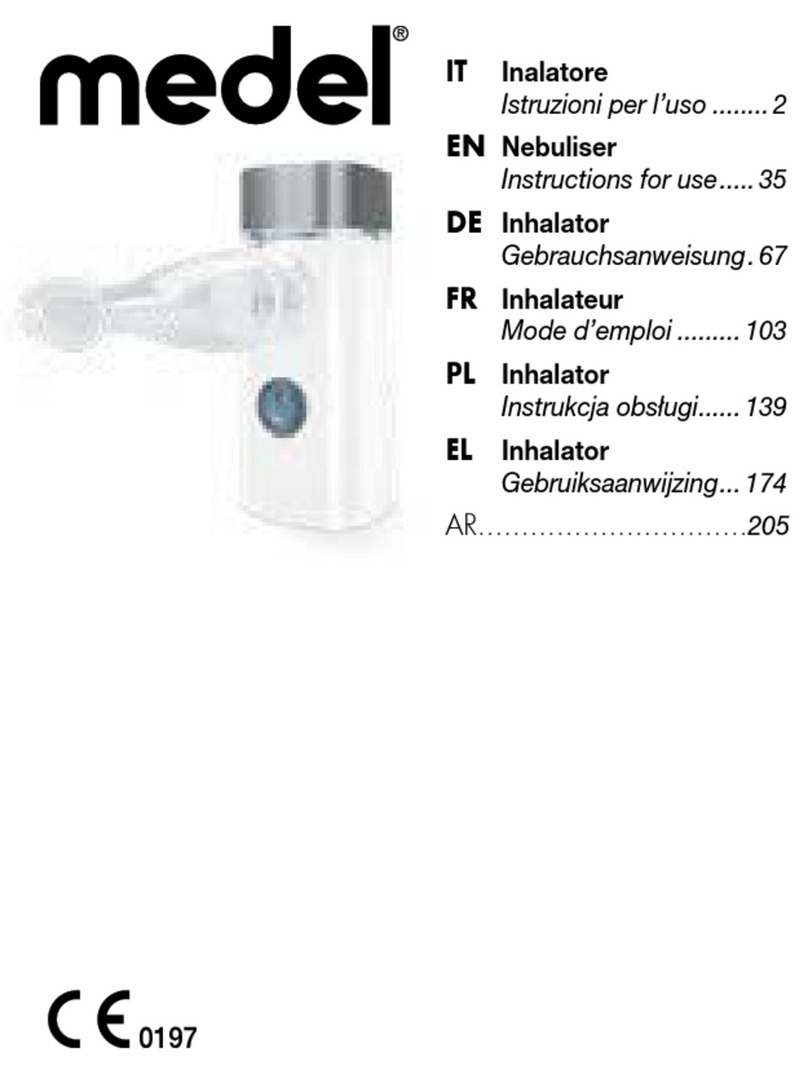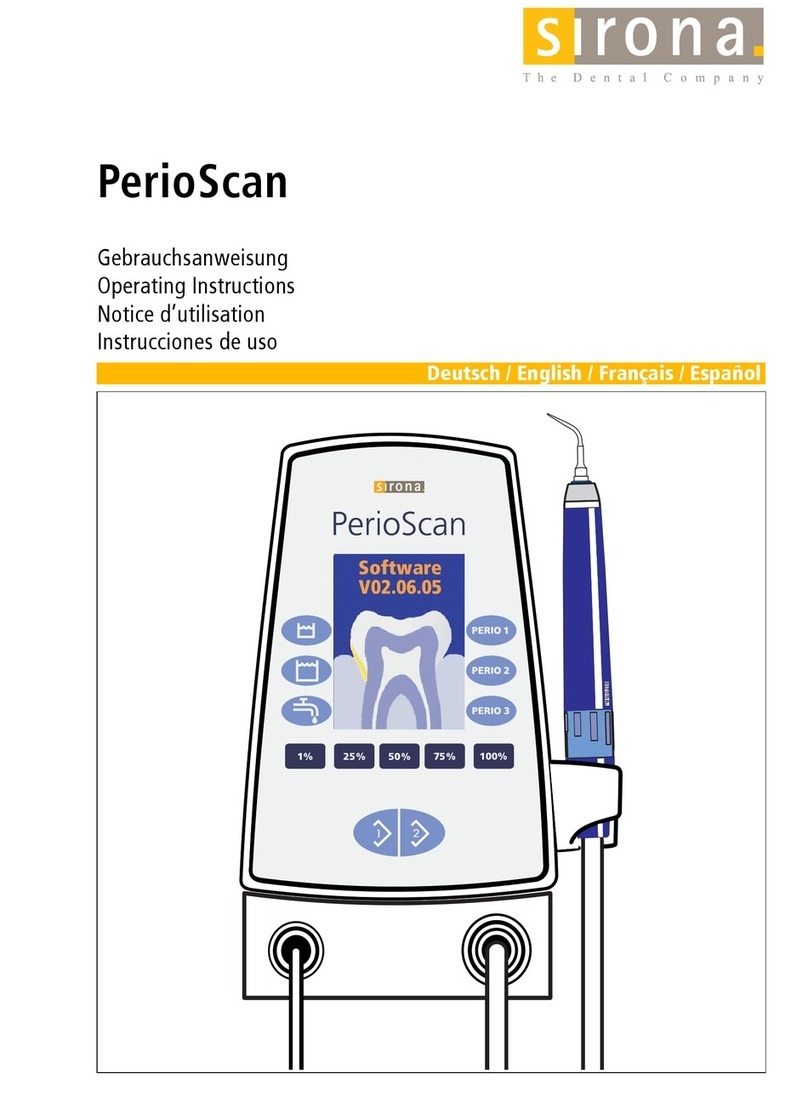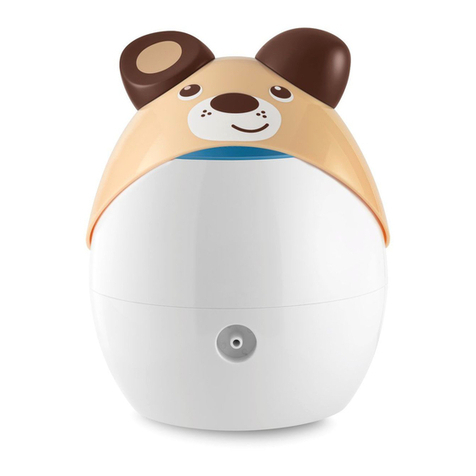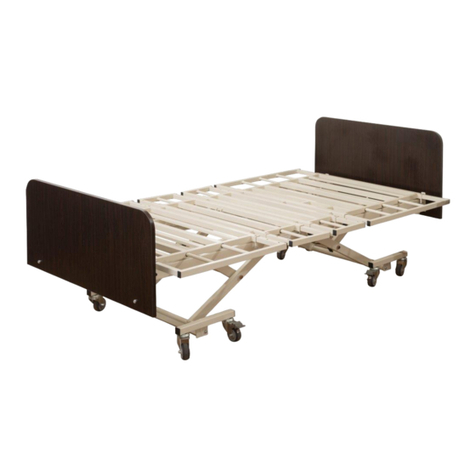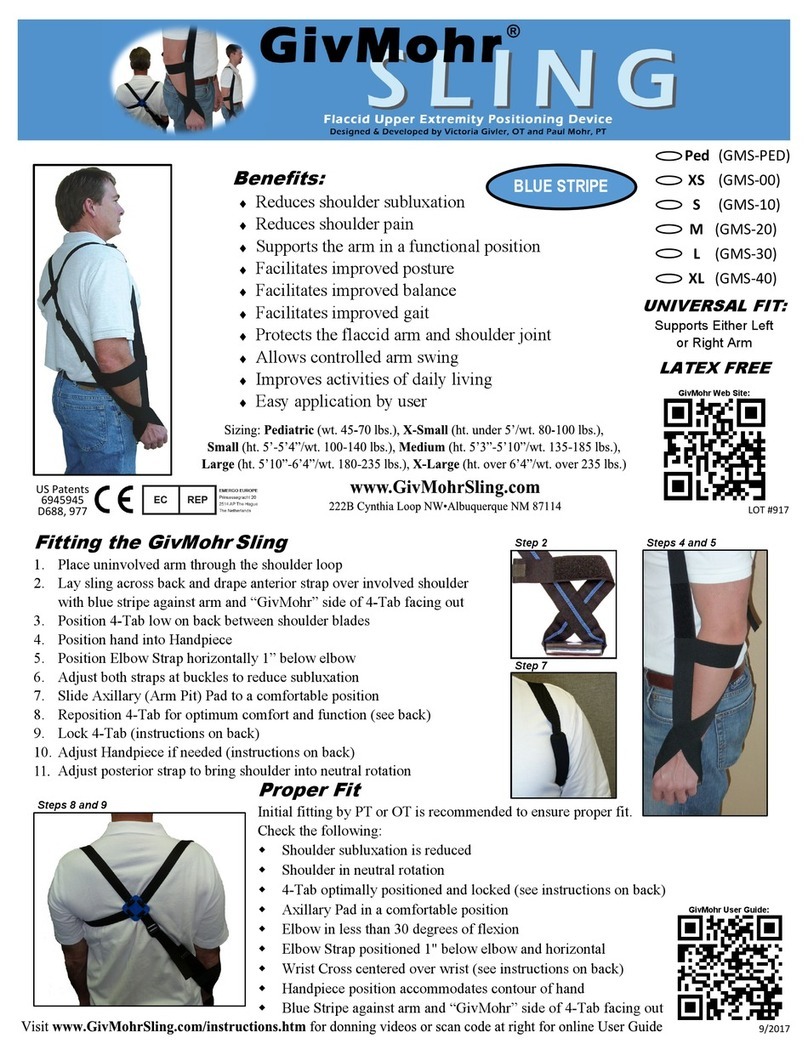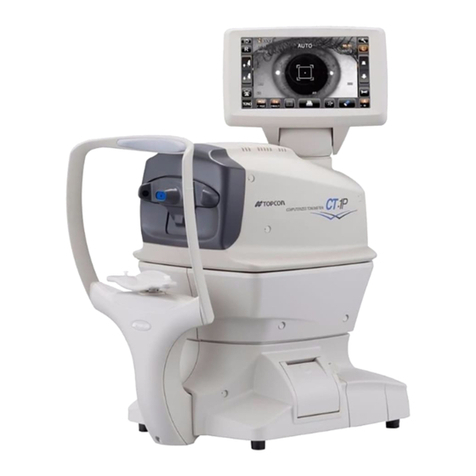
9
8
Storage, shipment and disposal
stored inside the implant box at room temperature. Each device must be implanted before
the “use by” date specied on the package. Packaging³ should be disposed of in accordance
with local legislation.
prospective implant users and their families shall be highly motivated and have realistic
expectations about the expected benefit of the implant.
not been observed with cochlear implants.
damage to the implant or electrodes during implantation will invalidate the warranty.
from a blow to the head, or due to electronic or other technical failure of the implant.
Replacement of the device is required in these cases.
and the applicable audio processor please consult the Audio Processor User Manual.
(e.g. Cornelia‑de‑Lange syndrome), as they may present an increased risk of suffocation
and/or laryngeal injury from attempting to swallow the coil and/or other external parts.
Surgical precautions and warnings – Risks related to surgery
the inner ear. The normal risks of surgery and general anaesthesia are applicable. Primary
surgical risks include the following: infection, inflammation, necrosis, haematoma, leakage
of CSF, damage to the facial nerve, pain, scarring of the wound, swallowing difficulties and
operative complication, but has the potential to be serious. The risk of meningitis may be
reduced, for example by vaccination, antibiotic cover, and surgical technique.
blockade should be avoided.
contraindicated.
taken to avoid exposing the dura inadvertently. If the dura is exposed as a landmark,
exposure shall be kept to an absolute minimum. Inadequate large exposure or injury to
the dura may reduce the barrier to future infection and may increase the potential risk for
future meningitis. For example, neuro‑radiological follow‑up in cases of fractures of the
anterior skull base have shown that foudroyantly progressing meningitis may occur, even
years later. Similar mechanisms may also exist in respect of ear and mastoid surgery.
cochlea is opened to prevent any bone dust from entering.
between the lateral side of the implant and the surface of the skin (with hair) shall not
exceed 6 mm.
• Theareaofthestimulatoronthetemporalboneshallbeflattenedinordertosecure
sufficient immobilization of the implant. The two pins of the CONCERTO PIN Cochlear
ImplantshouldberecessedintotheskullwiththeMi1000PINDrillGuidetoadepthof
1.5 mm. Also the electrode lead should be protected in a ramp‑like bony channel drilled
into the skull without sharp edges. Both should be done in such a way that there will be
no postoperative movement. Continuous movement may result in mechanical fatigue and
subsequent premature failure of electrical connections.
• Theimplantshallbeproperlyimmobilizedwithnon‑resorbablesutures.Donotplacesutures
directly over the electrode lead. The two pins give additional stability against translational
and rotational motion. Recessing the pins and efficient immobilization of the stimulator
with non‑resorbable sutures is important to prevent postoperative movement. Continuous
postoperative movement may result in mechanical fatigue and subsequent premature
failure of electrical connections.
• Theelectrodecanbeinsertedinthecochleaeitherthroughtheroundwindow(RW)or
viaacochleostomy.Whenperformingacochleostomy,inordertominimizetheriskof
postoperative infection, care should be taken that the round window and its membrane
remain intact during drilling.
• Therecommendeddiameterofthecochleostomy&RWopeningis1.3mmfortheCochlear
Implant CONCERTO PIN +Standard and 0.8 mm for the Cochlear Implants CONCERTO PIN
+Medium and CONCERTO PIN +Compressed.
• Therecommendeddiameterofthecochleostomy&RWopeningis1.3mmfortheCochlear
Implant CONCERTO PIN +FLEX
SOFT
and 0.8 mm for the Cochlear Implants CONCERTO PIN
+FLEX²8 and CONCERTO PIN +FLEX²4.
• Toensureproperelectricalstimulation,itisimportanttoinserttheelectrodearraywith
the apical single contacts facing towards the modiolus. Using a higher magnification to
focusontheelectrodetipcanfacilitatefindingthecorrectcontactorientation.Whenthe
electrode array is inserted, the small marker on the electrode lead indicates the contact
orientation at the electrode array base.
• Insertionoftheelectrodearrayintothecochleawillprobablydestroyanyremaininghearing
that may have been present in that ear pre‑surgically.
• OnlyMED‑ELapprovedsurgicalinstrumentsmustbeusedduringtheelectrodearray
insertion process.
• Theimplantcontainsastrongmagnet.Neverusemagneticsurgicaltools.
• Theelectrodearrayshouldbeinsertedintothecochleauptotherecommendeddepth
without compressing the array or touching the electrode contacts. To minimize the risk of
postoperative infection rinsed fascia or similar tissue (muscle is not recommended) should
be used. Create a seal around the electrode array at the entrance into the cochlea to
secure the electrode array and to seal the cochlea opening.
• Afterinsertion,theelectrodeleadshallbefixedsothatnopostoperativemovementwill
occur. The excess electrode lead must be looped in the mastoid cavity well below the
surface of the bone, using the cortical overhang to hold it in place, so that the electrode
array will not move out of the cochlea or be subject to external pressure that could cause
movement and subsequent damage of electrical connections.
• Donotplacethesuturesdirectlyovertheelectrodelead.
• Inaccurateplacementoftheelectrodearraymayimpairacousticperceptionwiththedevice
and may necessitate additional surgery. Improper fixation or placement of the electrode
lead may also result in premature failure of the implant.
• Otherrisksaftersurgerymaybeavoidedbyfollowingtheinstructionsintheapplicable
MED‑EL Audio Processor User Manual and the MED‑EL Application Software User Manual.
• Cochlearimplantationinpartiallydeafpatientswithlowfrequencyhearingcarriestherisk
of partial or total hearing loss which should be clearly explained to the patient by the
surgeon prior to implantation. However, studies have shown benefits using electrical
stimulation solely in this group of patients even if residual hearing is lost. Etiology, duration
of partial deafness, and hearing aid benefit should be taken into consideration and hearing
preservation surgical technique should be applied.




















